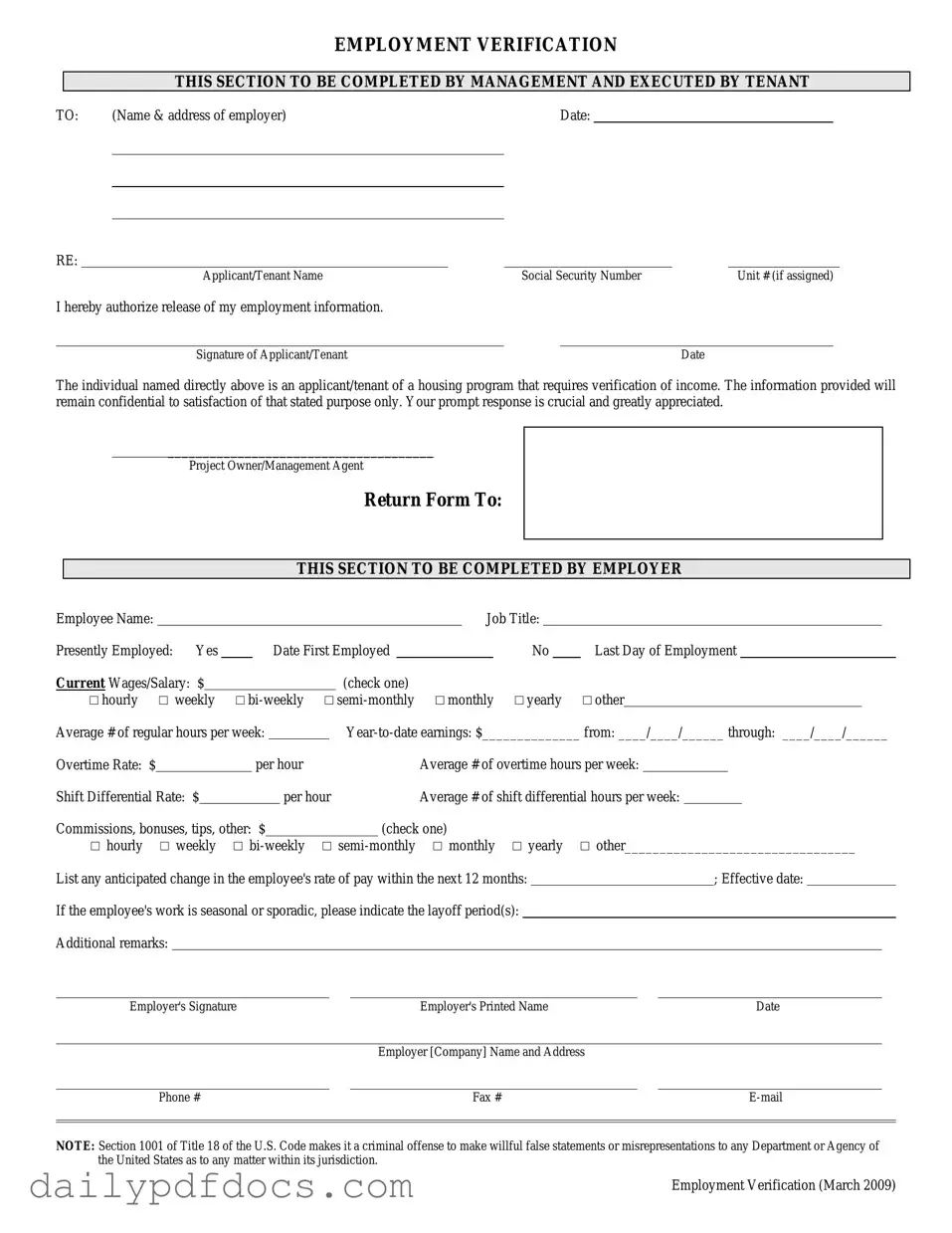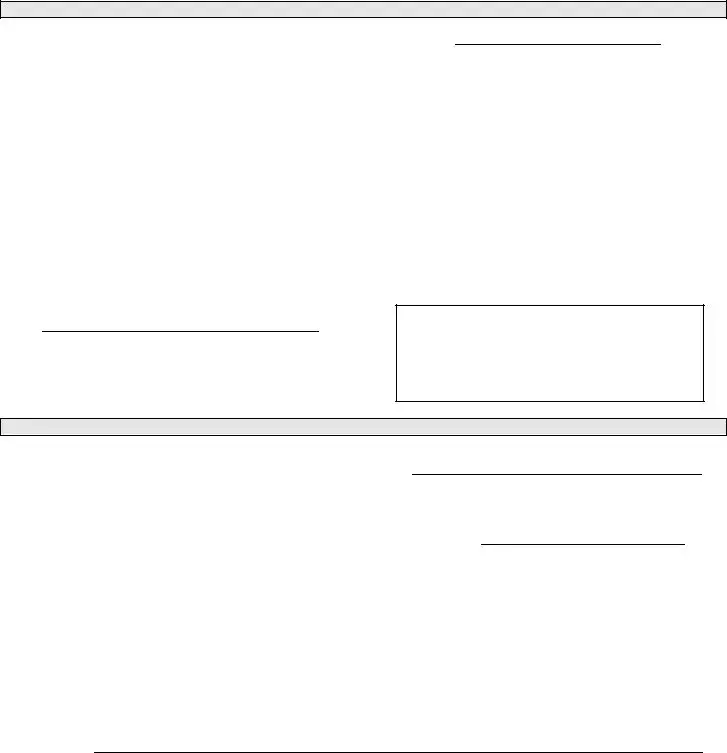What is an employment verification form?
An employment verification form is a document that an employer provides to confirm the employment status of an individual. It typically includes details such as the employee's job title, dates of employment, and salary information. This form is often used by lenders, landlords, or other entities that require proof of employment for various purposes.
Why might someone need an employment verification form?
Individuals may need this form when applying for a loan, renting an apartment, or undergoing a background check. It serves as a reliable source of information to verify that a person is employed and to assess their financial stability.
Who typically fills out the employment verification form?
The form is usually completed by an employer or a designated representative from the human resources department. In some cases, employees may be asked to provide the necessary information and submit it to their employer for verification.
What information is usually included in the employment verification form?
Common details found in the form include the employee's name, job title, employment start date, end date (if applicable), salary or hourly wage, and the employer's contact information. Additional notes about the employee's performance or role may also be included, depending on the context.
How is the employment verification form used?
This form is typically used by third parties to verify employment information. For example, a bank may request it to ensure that a borrower has a stable income before approving a loan. It can also be used during the hiring process to confirm a candidate's previous employment history.
Can an employee request their own employment verification form?
Yes, employees can request a copy of their employment verification form from their employer. It is advisable to make this request formally, either in writing or through an email, to ensure clarity and maintain a record of the request.
Is there a fee for obtaining an employment verification form?
Generally, there is no fee for obtaining an employment verification form, as it is part of the employer's obligation to provide accurate information about their employees. However, if a third-party service is involved, there may be associated costs.
How long does it take to receive an employment verification form?
The time it takes to receive the form can vary. In many cases, employers can provide the information quickly, often within a few days. However, if the request is complex or requires additional verification, it may take longer.
What should I do if my employment verification form contains errors?
If you notice any errors on your employment verification form, contact your employer or the human resources department immediately. Providing accurate information is crucial, so it’s important to address any discrepancies as soon as possible.
Are there any privacy concerns with employment verification forms?
Yes, privacy is an important consideration. Employers should ensure that they only share necessary information and that they comply with relevant privacy laws. Employees should also be aware of what information is being shared and with whom, to protect their personal data.

